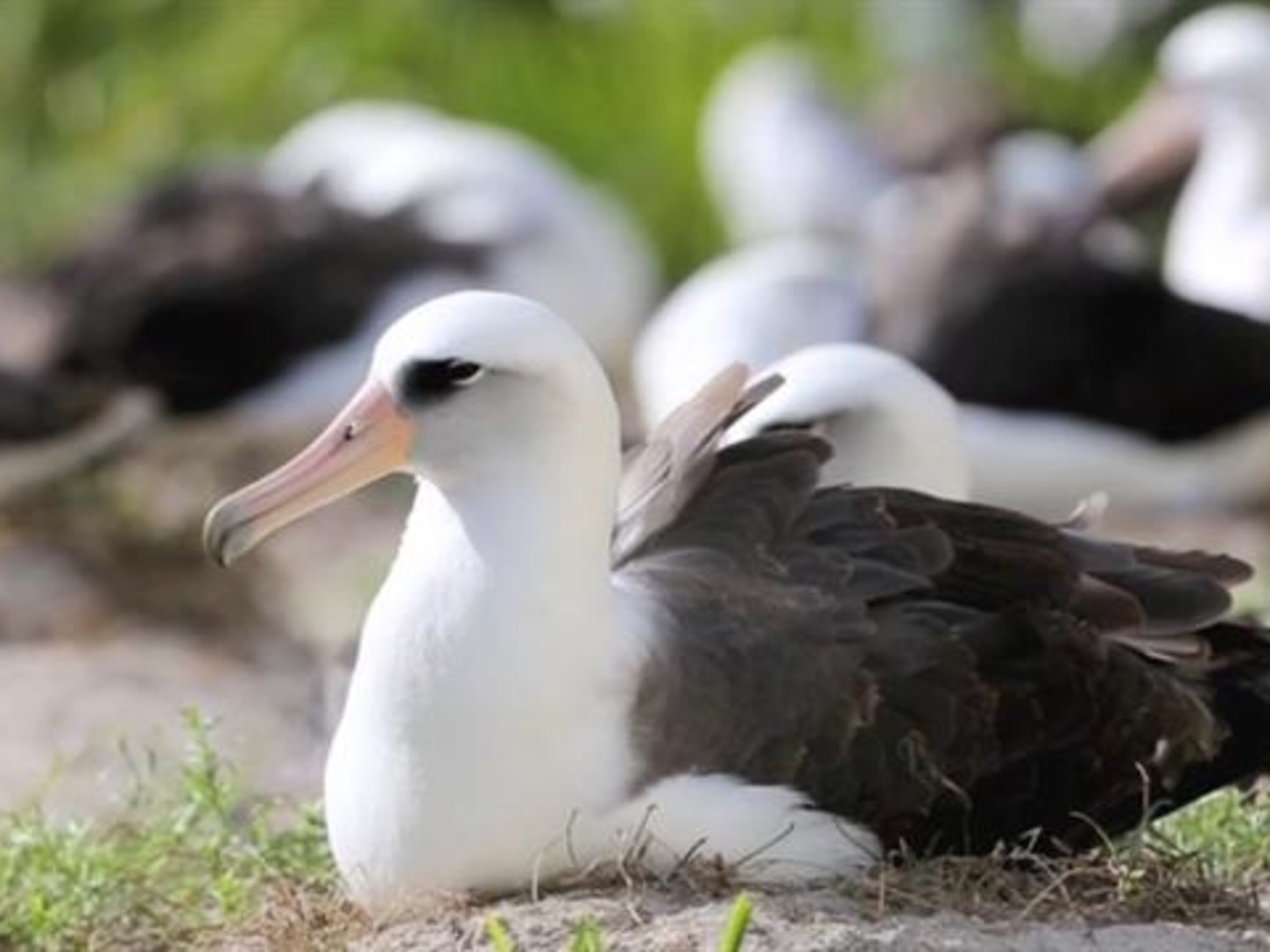Watch: The World's Oldest Known Wild Bird Just Hatched a Chick
Wisdom, the 65-year-old Laysan albatross, may even be a better mom with her decades of parental experience, experts say.
By their sixth decade, many parents start to think more about retirement and grandkids, the worries of childrearing a distant memory.
But for 65-year-old Wisdom the Laysan albatross, motherhood is still very much on her mind.
The oldest wild bird, which nests annually at the Midway Atoll National Wildlife Refuge in the Pacific Ocean, recently hatched her most recent chick, Kūkini, which is the Hawaiian word for "messenger."
An albatross mates for life, and Wisdom has survived several mates and reared more than 30 chicks. She has been with her current mate, Akeakamai, for several years, although scientists don’t know his age. (Related: "Wisdom the Albatross and Other Shockingly Old Moms.")
Every year, an albatross can lay one egg, and 98 percent of Laysan albatrosses come back to the Midway Atoll and Hawaiian Islands to breed.
“Wisdom is really teaching us how much we have to learn. We didn’t know an albatross would live this long and still be producing chicks,” said Susan White, a project leader with the U.S. Fish and Wildlife Service.
Long History
When scientist Chandler Robbins first banded Wisdom in 1956 as part of a project with the U.S. Geological Survey, he estimated the bird was around five years old. Without teeth or other markers to conclusively determine age, and no visible signs of aging, it can be tough to figure out how old a bird is.
Although several of Wisdom’s bands have rusted and been replaced over the years, the bird herself remains young and spry in both appearance and behavior.
Now 97, Robbins shows the same longevity as the bird he first banded, continuing to help the USGS with various ornithological projects.
Unlike women, who lose their ability to reproduce as they get older, female albatrosses aren’t known to experience anything like menopause. Chickens, however—especially those that lay many eggs over their lifetime—may lose the ability to create a thick, hard shell around their eggs.
Since albatrosses lay only one egg a year, this likely isn't an issue. (See National Geographic's pictures of animal mothers and babies.)
“I wish I knew how many other old girls were out there,” said Beth Flint, a wildlife biologist at the Pacific Islands office of the FWS.
Experienced Mom
In fact, a long life span may actually make Wisdom a better mother than some of her younger counterparts. That's because new moms can make mistakes that are deadly to chicks. (See "Oldest Known Wild Bird Hatches Chick at 62 [2013].")
Though by now Wisdom knows how to raise her chick to adulthood, it doesn’t make her immune to loss: In 2014, the egg that Wisdom and Akeakamai laid together went missing.
Kūkini is vulnerable to starvation, accidents, and predators, although having a full-time parent will help protect the fuzzy chick. Researchers believe that next year, Kūkini will have a younger sibling, too.
“There’s no reason to think Wisdom won’t keep going strong," White says.
Follow Carrie Arnold on Twitter.





